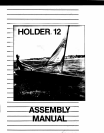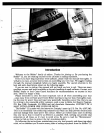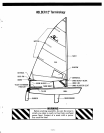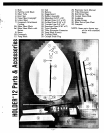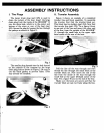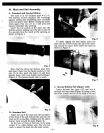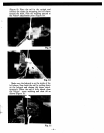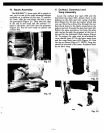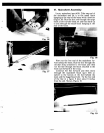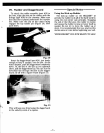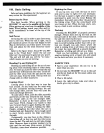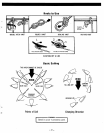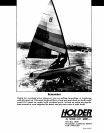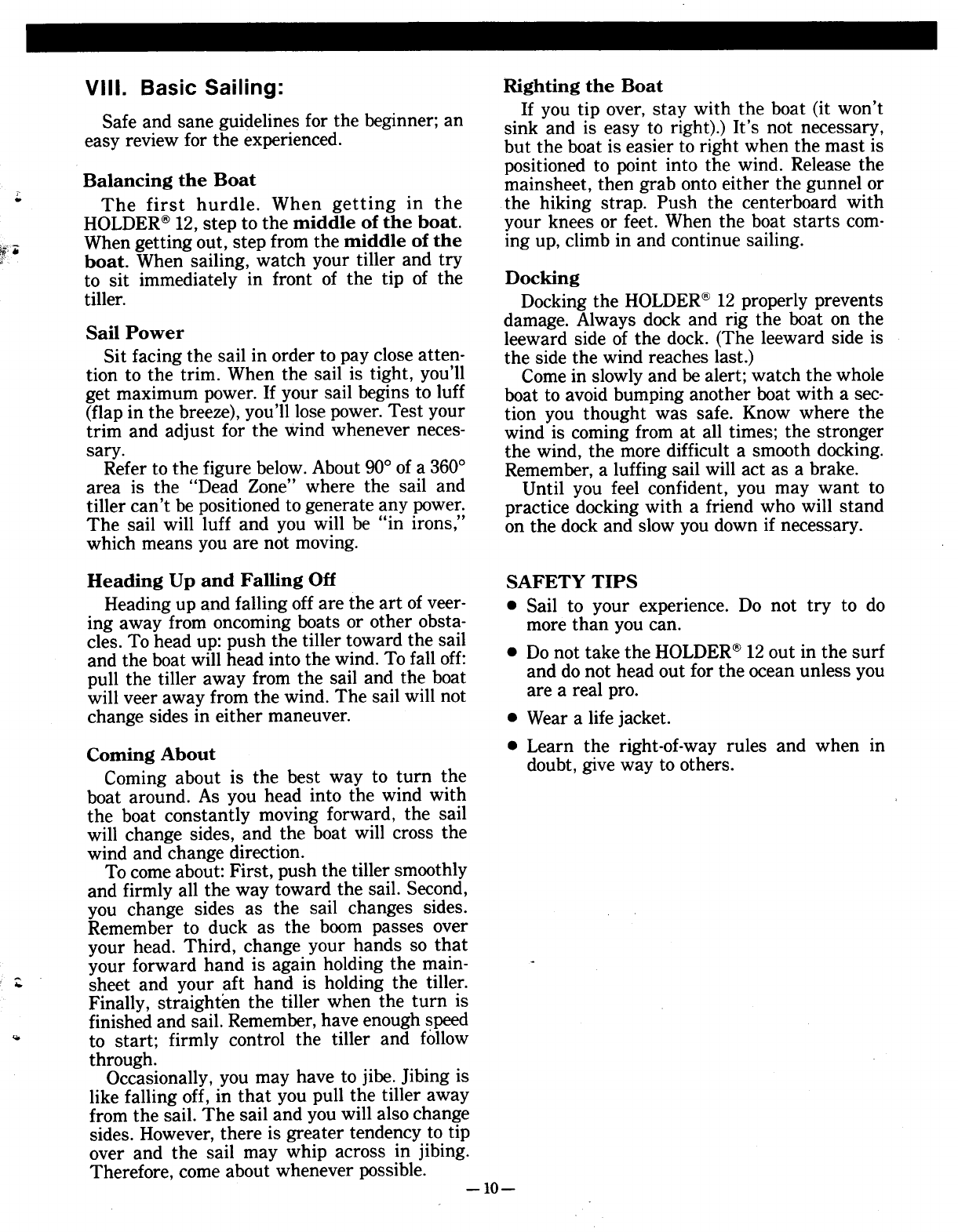
VIII. Basic Sailing: Righting the Boat
. . '. If you tip over, stay with the boat (it won't
Safe a!1d sane guldehne.s for the begInner, an sink and is easy to right).) It's not necessary,
easy review for the experIenced. but the boat is easier to right when the mast is
. positioned to point into the wind. Release the
~ Balancmg the Boat mainsheet, then grab onto either the gunnel or
.. The first hurdle. When getting in the the hiking strap. Push the centerboard with
HOLDER@ 12, step to the middle of the boat. your knees or feet. When the boat starts com-
"'- When getting out, step from the middle of the ing up, climb in and continue sailing.
?- boat. When sailing, watch your tiller and try
to sit immediately in front of the tip of the Docking
tiller. Docking the HOLDER@ 12 properly prevents
. damage. Always dock and rig the boat on the
Sail Power leeward side of the dock. (The leeward side is
Sit facing the sail in order to pay close atten- the side the wind reaches last.)
tion to the trim. When the sail is tight, you'll Come in slowly and be alert; watch the whole
get maximum power. If your sail begins to luff boat to avoid bumping another boat with a sec-
(flap in the breeze), you'll lose power. Test your tion you thought was safe. Know where the
trim and adjust for the wind whenever neces- wind is coming from at all times; the stronger
sary. the wind, the more difficult a smooth docking.
Refer to the figure below. About 900 of a 3600 Remember, a luffing sail will act as a brake.
area is the "Dead Zone" where the sail and Until you feel confident, you may want to
tiller can't be positioned to generate any power. practice docking with a friend who will stand
The sail will luff and you will be "in irons," on the dock and slow you down if necessary.
which means you are not moving.
Heading Up and Falling Off SAFETY TIPS
Heading up and falling off are the art of veer- 8 Sail to your experience. Do not try to do
ing away from oncoming boats or other obsta- more than you can.
cles. To head up: push the tiller toward the sail @ .
and the boat will head into the wind. To fall off: 8 Do not take the HOLDER 12 out m the surf
pull the tiller away from the sail and the boat and do not head out for the ocean unless you
will veer away from the wind. The sail will not are a real pro.
change sides in either maneuver. 8 Wear a life jacket.
Coming About 8 Learn t~e right-of-way rules and when in
.' doubt, give way to others.
ComIng about IS the best way to turn the
boat around. As you head into the wind with
the boat constantly moving forward, the sail
will change sides, and the boat will cross the
wind and change direction.
To come about: First, push the tiller smoothly
and firmly all the way toward the sail. Second,
you change sides as the sail changes sides.
Remember to duck as the boom passes over
your head. Third, change your hands so that
your forward hand is again holding the main-
; sheet and your aft hand is holding the tiller.
Finally, straighten the tiller when the turn is
finished and sail. Remember, have enough speed
.. to start; firmly control the tiller and follow
through.
Occasionally, you may have to jibe. Jibing is
like falling off, in that you pull the tiller away
from the sail. The sail and you will also change
sides. However, there is greater tendency to tip
over and the sail may whip across in jibing.
Therefore, come about whenever possible.
-10-



